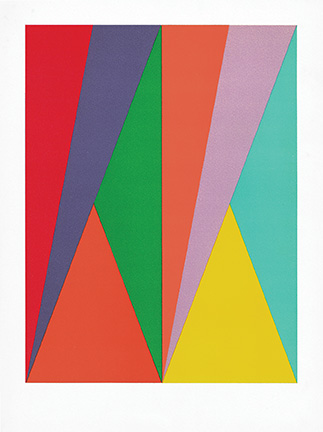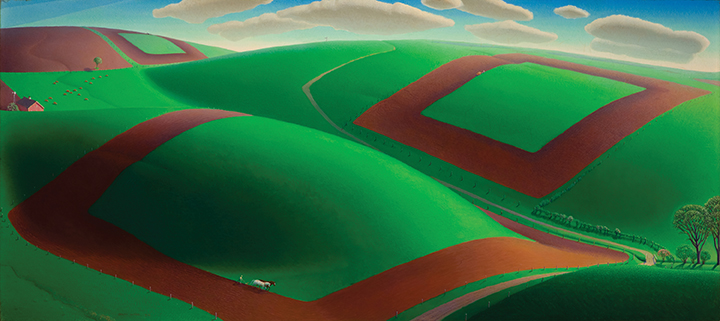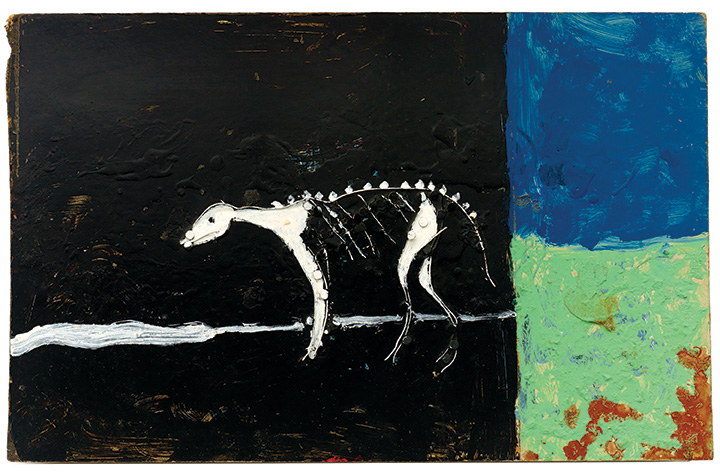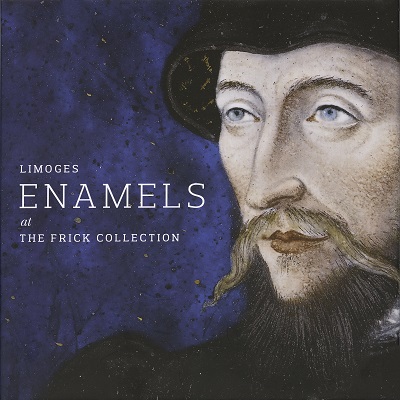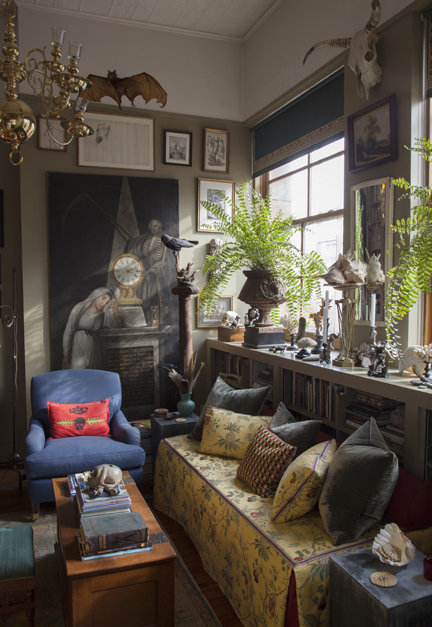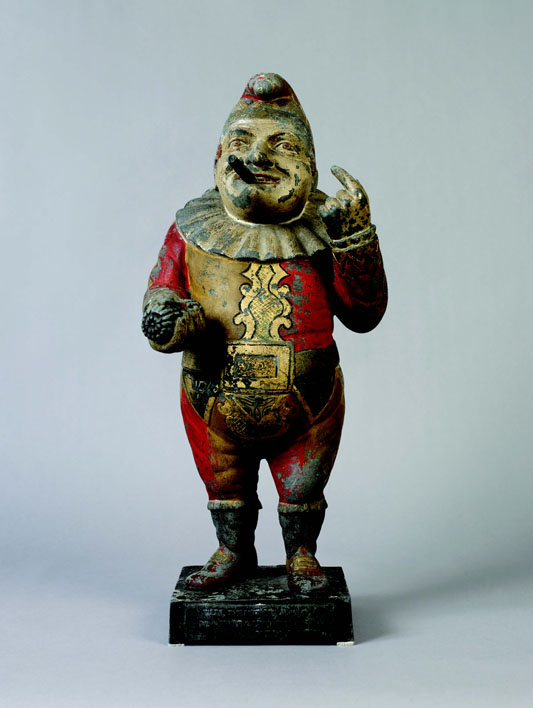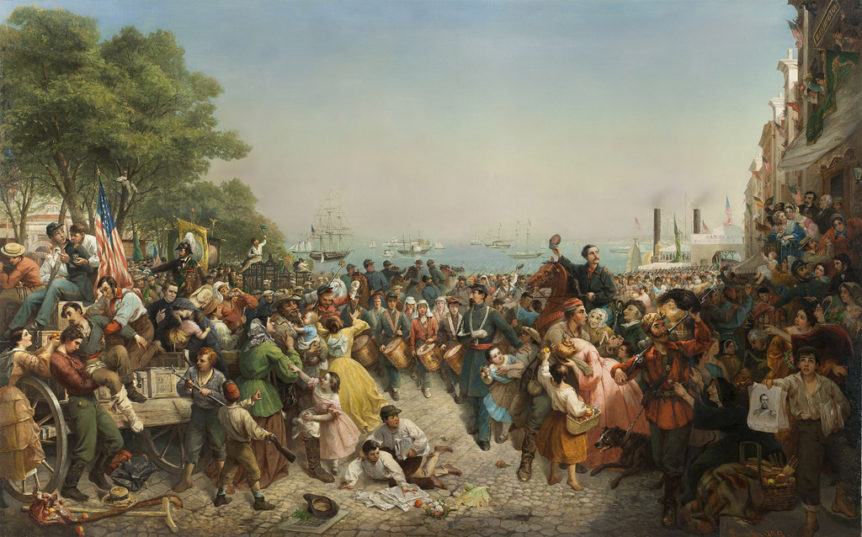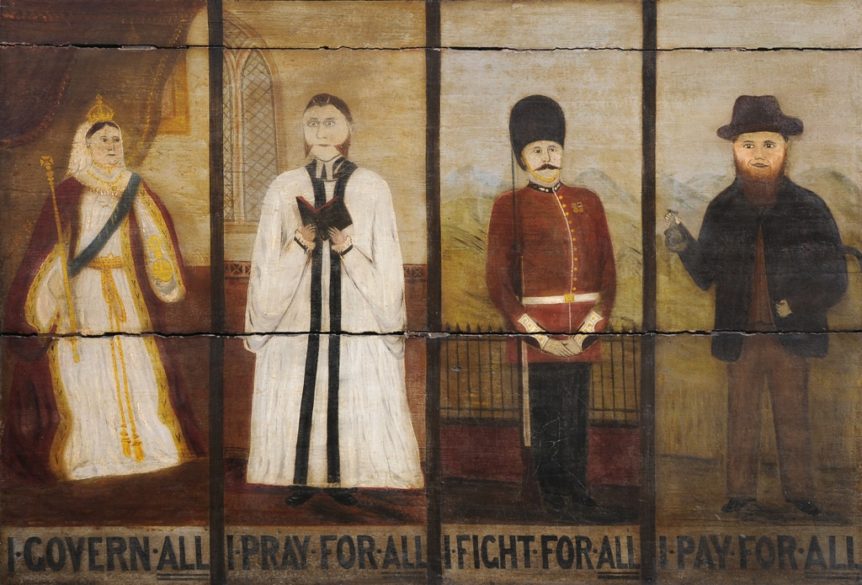Electra Havemeyer Webb, the founder of the Shelburne Museum, was a collector of astonishingly wideranging interests. Her diversity of tastes is reflected in holdings that include carriages, decoys, weather vanes, and antique bedcoverings, as well as paintings by Manet, Courbet, and Monet, and the steamboat Ticonderoga. Yet with its pastoral Vermont setting and a campus dotted with examples of vernacular New England architecture, the museum is primarily associated by many with its outstanding collection of folk art and Americana.
Bumper crop: Art and the farm at Reynolda House
Though the United States has been predominantly a nation of city dwellers since the 1920s, the farm still figures large in the American consciousness.
Let’s Just Call It Art
The work of Ronald Lockett, like that of Thornton Dial, Lonnie B. Holley, and others in the Birmingham-Bessemer circle, uses found materials to address environmental, historical, and political themes in ways that go beyond the usual categories. The youngest member of what, in retrospect, we might embrace as the Birmingham-Bessemer [Alabama] school, Ronald Lockett produced a body of roughly four …
On Books: New and Noteworthy
Making It Modern: The Folk Art Collection of Elie and Viola Nadelman by Margaret K. Hofer and Roberta J. M. Olson (New-York Historical Society in association with D. Giles). 376 pp., color and b/w illus. There’s nowt so queer as folk,” according to the venerable English comment on the vagaries of human personality. Indeed, when the Polish-born American sculptor Elie …
Speaking Through Wood
The Civil War has left its mark on two important pieces of vernacular furniture acquired by the Wadsworth Atheneum Fig. 1. Secretary-bookcase attributed to members of Connecticut’s 16th Infantry, made to honor brothers Wells (1845–1904) and John Bingham (1844 –1862), 1876. Walnut, oak, ebony, poplar, pine, maple, metal, glass, muslin, silk, bone, horn, abalone, and Seth Thomas movement; height 95 1⁄2, …
Living with Thomas Jayne
The most surprising interior in London is Sir John Soane’s Museum. The sheer density of paintings, sculpture, furniture, architectural fragments and models, Greco-Roman marbles, and much more appears largely as it did when the renowned early nineteenth-century architect lived there, arranging and rearranging his art, artifacts, and antiquities. What elevates the profusion from an eccentric jumble to a splendid, startlingly …
Talking antiques: Winter Antiques Show
We asked exhibitors at the Winter Antiques Show to highlight one exceptional object in their booths and describe it as they might to an interested collector. Here are the things they chose, along with some of their comments. ALLAN AND PENNY KATZ This artful rendering of a birdcage in the shape of the United States Capitol Building was undoubtedly made …
Events: Exhibitions, symposiums, and lectures through December
ALABAMA Montgomery Montgomery Museum of Fine Arts: “Alexander Archipenko: Dreizehn Steinzichnungen”; November 29 to January 18, 2015. “The Grand Tour: Prints from Rome, Florence, Venice, Paris, and London”; to November 23. “Imprinting the West: Manifest Destiny, Real and Imagined”; November 8 to January 4, 2015. ARIZONA Tucson Tucson Museum of Art: “La Vida Fantastica: Selections from the Latin American Folk …
Salon style at the New-York Historical Society
There is an excellent reason why we no longer hang paintings as they have now done in an odd but worthy exhibition at the New-York Historical Society. Indeed, even at the N-YHS, that hanging would be inexcusable, were it not for the fact that the whole point of The Works: Salon Style at the New-York Historical Society, (on view through February …
Breaking ground: British folk art at the Tate
In 1768, when the British Royal Academy of Arts was established, it emphatically distinguished the fine arts from crafts by exiling the latter, declaring that “no needlework, artificial flowers, cut-paper, shell-work or any such performances should be admitted.” By 1948 artworks from outside the mainstream still had not overcome this prejudice, prompting the designer, writer, and folk art enthusiast Enid …

